
The American Locomotive Company was an American manufacturer that operated from 1901 to 1969, initially specializing in the production of locomotives but later diversifying and fabricating at various times diesel generators, automobiles, steel, tanks, munitions, oil-production equipment, as well as heat exchangers for nuclear power plants.

A diesel locomotive is a type of railway locomotive in which the power source is a diesel engine. Several types of diesel locomotives have been developed, differing mainly in the means by which mechanical power is conveyed to the driving wheels. The most common are diesel-electric locomotives and diesel-hydraulic.

The EMD SD90MAC is a model of 6,000 hp (4,470 kW) C-C diesel-electric locomotive produced by General Motors Electro-Motive Division (EMD). It is, with the SD80MAC, one of the largest single-engined locomotives produced by EMD, surpassed only by the dual-engined DDA40X.

The ALCO HH series was an early set of diesel switcher locomotives built by the American Locomotive Company (ALCO) of Schenectady, New York between 1931 and 1940, when they were replaced by the S series: the 660 hp (490 kW) S-1 and 1,000 hp (750 kW) S-2. They were ALCO's first diesel switchers to enter true series production, and among the first land vehicles anywhere to use the revolutionary diesel-electric power transmission.

The GE U50C was a 5,000 hp (3,700 kW) diesel-electric locomotive built by GE Transportation Systems. Each was powered by two 2,500 hp (1,860 kW) diesel engines.

The Evolution Series is a line of diesel locomotives built by GE Transportation Systems, initially designed to meet the U.S. EPA's Tier 2 locomotive emissions standards that took effect in 2005. The line is the direct succesor to the GE Dash 9 Series. The first pre-production units were built in 2003. Evolution Series locomotives are equipped with either AC or DC traction motors, depending on the customer's preference. All are powered by the GE GEVO engine.

Electro-Motive Diesel is a brand of diesel-electric locomotives, locomotive products and diesel engines for the rail industry. Formerly a division of General Motors, EMD has been owned by Progress Rail since 2010. Electro-Motive Diesel traces its roots to the Electro-Motive Engineering Corporation, founded in 1922 and purchased by General Motors in 1930. After purchase by GM, the company was known as GM's Electro-Motive Division. In 2005, GM sold EMD to Greenbriar Equity Group and Berkshire Partners, and in 2010, EMD was sold to Progress Rail. Upon the 2005 sale, the company was renamed to Electro-Motive Diesel.
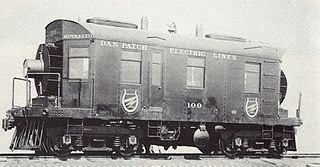
Before diesel engines had been developed for locomotive power in the 1920s and 1930s, many companies chose to use the gasoline engine for rail motive power. The first GE Locomotive was a series of four-axle (B-B) boxcab gasoline-electric machines closely related to the "doodlebugs", self-propelled passenger cars built in the early Twentieth Century.

A boxcab, in railroad terminology, is a North American term for a locomotive in which the machinery and crew areas were enclosed in a box-like superstructure. Deriving from "boxcar", the term mainly occurs in North America. It was also applied to Victorian Railways "E" class second series electric locomotives.
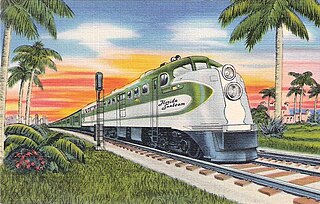
The ALCO DL-109 was one of six models of A1A-A1A diesel locomotives built to haul passenger trains by the American Locomotive Company (ALCO) between December, 1939 and April, 1945. They were of a cab unit design, and both cab-equipped lead A units DL-103b, DL-105, DL-107, DL-109 and cabless booster B units DL-108, DL-110 models were built. The units were styled by noted industrial designer Otto Kuhler, who incorporated into his characteristic cab the trademark three-piece windshield design. A total of 74 cab units and four cabless booster units were built.

The GE C40-8W is a 6-axle diesel-electric locomotive built by GE Transportation Systems from 1989 to 1994. Often referred to as the Dash light series, it is part of the GE Dash 8 Series of freight locomotives. This locomotive model is distinguished from the predecessor Dash 8-40C by the addition of a newer "wide" or "safety" cab. A cowl-bodied version of this locomotive, built only for the Canadian market, was the GE Dash 8-40CM.
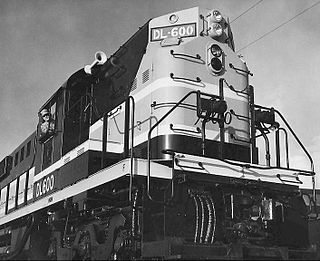
The ALCO RSD-7 was a diesel-electric locomotive of the road switcher type built by ALCO at Schenectady, New York between January 1954 and April 1956. Two versions were built, with the same RSD-7 model designation but different specifications and power ratings, although both used the ALCO 244 engine in V16 configuration. Specification DL-600, of which only two were built, developed 2,250 hp and used the 244G engine. The revised specification DL-600A, numbering 27 locomotives, was rated at 2,400 hp and used the 244H engine. The RSD-7 was superseded by the ALCO 251-engined ALCO RSD-15, which looks very similar. The RSD-7 was the last ALCO diesel built with a 244 engine.
The Erie-built was the first streamlined, cab-equipped dual service diesel locomotive built by Fairbanks-Morse, introduced as direct competition to such models as the ALCO PA and FA and EMD FT. F-M lacked the space and staff to design and manufacture large road locomotives in their own plant at Beloit, Wisconsin, and was concerned that waiting to develop the necessary infrastructure would cause them to miss out on the market opportunity for large road locomotives. Engineering and assembly work was subcontracted out to General Electric, which produced the locomotives at its Erie, Pennsylvania, facility, thereby giving rise to the name "Erie-built."
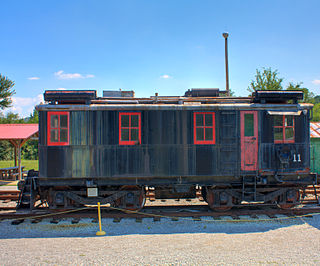
The ALCO boxcabs were diesel-electric switcher locomotives, otherwise known as AGEIR boxcabs as a contraction of the names of the builders. Produced by a partnership of three companies, ALCO built the chassis and running gear, General Electric the generator, motors and controls, and Ingersoll Rand the diesel engine. The principle of operation was the same as modern locomotives, the diesel engine driving a main generator of 600 volts DC with four traction motors, one per axle.
The GE Universal Series is a series of diesel locomotives intended for the export market introduced by General Electric in early 1956. General Electric had previously partnered with Alco, producing locomotives for export using Alco's 244 engine, and provided electrical parts for Alco's domestic production. However, with the advent of the Universal Series, GE ended its partnership with Alco and entered the export locomotive market on its own.
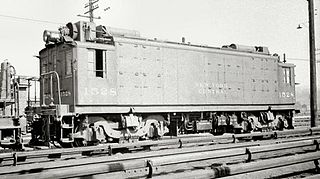
The GE three-power boxcabs were early electro-diesel hybrid switcher locomotives. These boxcabs were termed oil battery electrics to avoid the use of the German name Diesel, unpopular after World War I.

R-Motor was the class designation given by the New York Central one prototype and a later fleet of 42 ALCO-GE built electric freight locomotives for use in the New York Electrified Zone. In conjunction with the P Motors, the Rs marked the second generation of electric locomotives built for the New York Central. Also like the P Motors they used advanced nose suspended traction motors and the R-2s were some of the first North American locomotives to make use of the C-C wheel arrangement, which later became the standard for diesel electric road freight.

Under the British and Imperial classification scheme of locomotive axle arrangements 1Co+Co1 is a classification code for a locomotive wheel arrangement of two eight-wheeled bogies with an articulated inter-bogie connection, each with three axles powered by a separate traction motor per axle and with the fourth non-powered axle in an integral leading pony truck to reduce the axle load. The similar 1Co-Co1 classification is in the same axle configuration, but without the inter-bogie connection.

The Great Northern Z-1 was a class of ten electric locomotives built for the Great Northern Railway They were used to work the route through the second Cascade Tunnel. They were built between 1926–1928 by Baldwin Locomotive Works, with Westinghouse electrics, and stayed in service until dieselisation in 1956. Each was of 1,830 horsepower (1,360 kW) with a 1-D-1 wheel arrangement, although they were always used in coupled pairs.





















